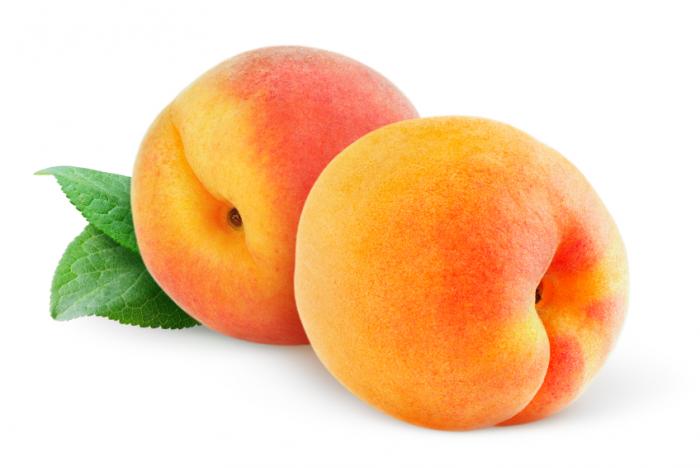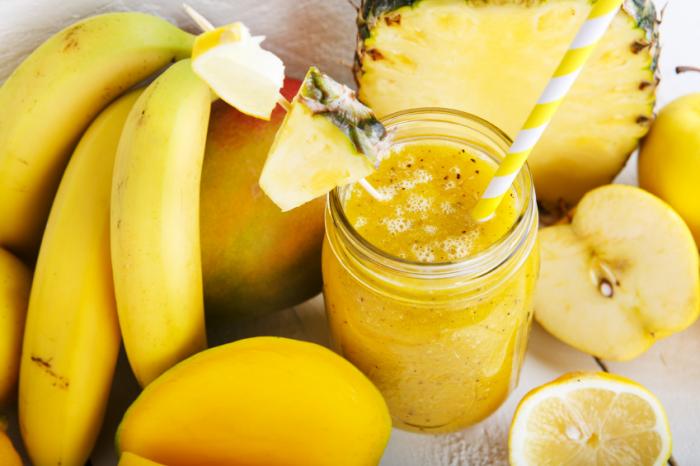Peaches are a characteristically fuzzy fruit native to northwest China. They are a member of the stone fruit family, meaning that they have one large middle seed, along with cherries, apricots, plums and nectarines.
The inner flesh of a peach can range in color from white to yellow or orange. There are two different varieties of peaches: freestone and clingstone, which refer to whether the flesh sticks to the inner seed or easily comes apart.
This MNT Knowledge Center feature is part of a collection of articles on the health benefits of popular foods. It provides a nutritional breakdown of the fruit and an in-depth look at its possible health benefits, how to incorporate more peaches into your diet and any potential health risks of consuming peaches.
Nutritional breakdown of peaches
One raw medium peach (147 grams) has 50 calories, 0.5 grams of fat, 0 grams of cholesterol and sodium, 15 grams of carbohydrate, 13 grams of sugar, 2 grams of fiber and 1 gram of protein. It provides 6% of your daily vitamin A needs and 15% of daily vitamin C needs.
One medium peach also contains 2% or more daily value of vitamins E and K, niacin, folate, iron, choline, potassium, magnesium, phosphorus, manganese, zinc and copper.
Possible health benefits of consuming peaches

Stone fruit like peaches, plums and nectarines have been shown to ward off obesity-related diseases such as diabetes, metabolic syndrome and cardiovascular disease.
According to a study from Texas A&M, stone fruit like peaches, plums and nectarines have been shown to ward off obesity-related diseases such as diabetes, metabolic syndrome and cardiovascular disease. Dr. Luis Cisneros-Zevallos, Texas A&M associate professor and AgriLife Research food scientist, states that their studies have shown that stone fruits have bioactive and phenolic compounds with anti-obesity and anti-inflammatory properties that may also reduce the bad cholesterol (LDL) associated with cardiovascular disease. He attributes the benefits to four major phenolic groups in stone fruits: anthocyanins, chlorogenic acids, quercetins and catechins, all of which work together and complement each other to fight off obesity-related illness.
Cancer: As an excellent source of the strong antioxidant vitamin C, peaches can also help combat the formation of free radicals known to cause cancer. While an adequate vitamin C intake is necessary and very beneficial as an antioxidant, the amount necessary to consume for treatment purposes for cancer is thought to be beyond oral intake.2
High fiber intakes from all fruits and vegetables are associated with a lowered risk of colorectal cancer.
Skin: The antioxidant vitamin C, when eaten in its natural form (in whole foods such as peaches) or applied topically, can reduce wrinkles, improve overall skin texture and help to fight skin damage caused by the sun and pollution. Vitamin C also plays a vital role in the formation of collagen, the support system of your skin.
Diabetes: Another study from Texas A&M showed that peaches and plum extracts were effective in killing even the most aggressive types of breast cancer cells and did not harm normal healthy cells in the process.
Studies have shown that type 1 diabetics who consume high-fiber diets have lower blood glucose levels and type 2 diabetics may have improved blood sugar, lipids and insulin levels. One medium peach provides about 2 grams of fiber.
The Dietary Guidelines for Americans recommends 21-25 g/day for women and 30-38 g/day for men.
Heart health: The fiber, potassium, vitamin C and choline content in peaches all support heart health. An increase in potassium intake along with a decrease in sodium intake is the most important dietary change that a person can make to reduce their risk of cardiovascular disease, according to Mark Houston, M.D., M.S., an associate clinical professor of medicine at Vanderbilt Medical School and director of the Hypertension Institute at St. Thomas Hospital in Tennessee.3
In one study, those who consumed 4069 mg of potassium per day had a 49% lower risk of death from ischemic heart disease compared with those who consumed less potassium (about 1000 mg per day).3
Eye Health: A higher intake of fruits (3 or more servings per day) has been shown to decrease risk of and progression of age-related macular degeneration.
It is important to note that the benefits of consuming fruits and vegetables of all kinds, including peaches, are infinite. As plant food consumption goes up, the risk of all lifestyle related diseases (such as obesity, diabetes and heart disease) goes down. High fruit and vegetable intake is also associated with healthy complexion and hair, increased energy, lower weight and lower risk of mortality.
How to incorporate more peaches into your diet
Summer is the best time to buy peaches, when they are in the peak of their season and have the best flavor, freshness and nutritional value. Make sure to choose peaches with taut, fuzzy skin that give in slightly when pressed. To ripen peaches, place them in a paper bag or near a windowsill with plenty of sunshine.
When buying canned peaches, avoid those canned in heavy syrup and look for varieties with no added sugars.

Add a few slices of frozen peaches to your smoothies.
Make it a meal: Create a summer salad by starting with mixed greens or spinach and add dry-roasted nuts, fresh peaches, fresh mozzarella and grilled chicken, salmon or tofu. Drizzle with a balsamic dressing.
Easy as can be: Peaches are a quick and easy “on-the-go” snack that requires no prep time.
Have a peachy morning: Add peaches to your breakfast! Sliced peaches go great with oatmeal and cold cereals, and as a topper for pancakes, waffles and French toast.
So refreshing: Muddle peaches into your glass of lemonade, iced tea or water for a burst of fresh fruity flavor.
Sweet as pie: Bake sliced peaches with a drizzle of honey and cinnamon for a quick and healthy dessert.
Get spicy: Incorporate peaches into your salsa. Make a fresh salsa with diced peaches, mango, jalapeno, red peppers and chipotle pepper. Use as a topper for your favorite fish tacos.
Smooth it over: Add a few slices of frozen peaches to your smoothies. Add pineapple juice, half a frozen banana and Greek yogurt for a sweet citrusy treat.
Risks and Precautions
It is the total diet or overall eating pattern that is most important in disease prevention and achieving good health. It is best to eat a diet with variety than to concentrate on individual foods as the key to good health.